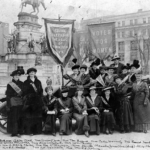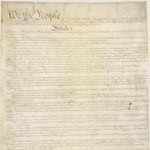Do your students know what they’re free to say online? At school? On a public street corner? From censorship to cyberbullying, the First Amendment and the freedoms it protects are as hotly contested as ever. This EDCollection explores 16 free speech debates ranging from the founding of our nation to recent headlines to illustrate what free speech actually means, where it comes from, and how far it can go. Whether you’re a social studies teacher looking for a complete unit or an English teacher looking to spend a single class period on free expression, there’s something for everyone. Free registration required.
Freedom of Religion: Free Exercise Clause
Students will examine the protections enshrined in the First Amendment’s Free Exercise Clause. Students will use the Interactive Constitution to examine the Free Exercise Clause’s text and history and how the Supreme Court has interpreted it over time. In this lesson, students compare and contrast the questions, opinions, and dissents in a series of Supreme Court cases to define when the Free Exercise Clause does and does not limit government action.
‘Life, Liberty, & the Pursuit of Happiness’ Digital Textbook
“Life, Liberty & the Pursuit of Happiness” is free online U.S. history resource for high school students. This textbook is the first entirely free U.S. history resource that aligns with AP standards. It is based on compelling stories that bring American history to life.
Media Literacy: Making Sense of the 24/7 News Cycle
A free press is essential to the success of a democracy. As the media has evolved over time to include radio, television, internet and now smart phones and social media apps, the ability in “being capable to read them” needs examining. This lesson guides students through analysis of social media posts, the definition of terms relevant to the media, and provides tools for identifying quality sources for examination of current political issues. This lesson accompanies the Talking Turkey: Taking the ‘Dis’ Out of Civil Discourse program as well as YLI and American Evolution’s First Freedom Wall. Free registration is required to access the lesson plan.
The Campus Speaker: A Case Study in Free Speech
Use this classroom-ready lesson to examine free-expression issues surrounding a controversial speaker invited to appear at UC Berkeley. We provide questions to help guide your students on if and when offensive speech should be banned, and what are the competing groups and interests.
IRL 1: Free Speech in Schools Podcast
We’re digging into four incredibly important Supreme Court cases – four cases that have shaped how we interpret the meaning of free speech in public schools. Is political protest allowed in class? Is lewd speech covered by the First Amendment? Can school administrators determine what students can and can’t say in the school newspaper? Listen in, and find out how students and schools have gone head to head over how First Amendment rights apply in a public school setting.
First Amendment Overview
Congress shall make no law respecting an establishment of religion, or prohibiting the free exercise thereof; or abridging the freedom of speech, or of the press; or the right of the people peaceably to assemble, and to petition the Government for a redress of grievances.
Women’s Suffrage and Equal Rights: Lesson Plans and Resources

On August 18, 1920, the 19th Amendment to the United State Constitution was ratified, thus granting women the right to vote. The ratification of this amendment was a result of the powerful, unwavering momentum of hundreds of women who first convened a women’s rights convention in Seneca Falls, New York. This collection provides free lessons that will help students learn more about this important time in history, highlighting important developments in not only Women’s Rights, but U.S. Civil Rights and other amendments to the Constitution.
The First Amendment: What’s Fair in a Free Country?

Young people have a profound sense of the importance of fairness. “It’s not fair” is often used as a one-size-fits-all argument when a child feels victimized. In situations where the child has an interest in protecting his or her actions, “It’s a free country!” is often the argument of choice. On the other hand, children are very sensitive about speech and policies they consider to have a negative effect on their well-being.
Balancing rights and responsibilities is difficult, even for the Supreme Court. This lesson demonstrates to students that doctrine of freedom of speech and its proper application is an ongoing process.
Constitutional Index – Amendment 1 Free Exercise Clause
The Constitutional Index breaks down the U.S. Constitution by Section, Amendment, and Clause and contains broader topics and themes. These are used to cross-reference Library resources in an effort to annotate constitutional history.